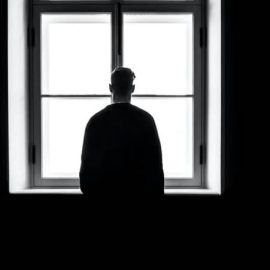

This article is an excerpt from the Shortform book guide to "Talking to Strangers" by Malcolm Gladwell. Shortform has the world's best summaries and analyses of books you should be reading.
Like this article? Sign up for a free trial here .
What happened during the Jerry Sandusky case? Why was Jerry Sandusky able to get away with abusing children for so long? Who’s to blame in the Jerry Sandusky case?
We’ll cover the elements of the Jerry Sandusky case and discuss why the people around him trusted him–and why they shouldn’t be penalized for being trusting.
The Jerry Sandusky Case
Jerry Sandusky always loved sports and loved being around young people. He and his wife adopted six children and fostered countless more. In 1977, Sandusky started a charity, a sports program for troubled youth called the Second Mile. Among the children, Sandusky was known to be a goofball. And Sandusky had a great reputation among his coworkers, the families of Second Mile kids, reporters, and almost everyone else he came into contact with. This was one of the primary problems with the Jerry Sandusky case.
But allegations against Jerry Sandusky began as early as 1998 when a young boy from Second Mile told his mother that he had showered with Sandusky. Ten years later, another boy came forward describing Sandusky’s behavior as inappropriate. But in both cases, Jerry Sandusky’s behavior was rationalized away as nothing more than “boundary issues.” The two cases together were not enough to push any doubts past the trigger point.
From 2009-2011 of the Jerry Sandusky case, the police interviewed former Second Mile members to find more victims. For two years, they failed. But then, the prosecutor’s office received an email from an unknown source. It said to contact Mike McQueary about what he witnessed in the Penn State locker room a full decade earlier.
One day in 2001, Michael McQueary entered the locker room of the Lasch Football Building at Pennsylvania State University. He expected the building to be empty, so he was surprised when he heard slapping sounds coming from the showers. Looking around, McQueary saw Jerry Sandusky, retired defensive coordinator of the Penn State football team, showering (naked) with a “minor individual.” McQueary later said that the boy looked to be about ten to twelve years old. Sandusky and the boy were standing close enough to be touching.
McQueary didn’t know what to do. He ran upstairs and called his parents to tell them what he had seen. Some days later, McQueary went to Penn State football’s head coach, Joe Paterno, to tell him about what he saw. Eventually, Paterno took McQueary’s story to the university’s athletic director Tim Curley, senior administrator Gary Schultz, and president Graham Spanier.
All of a sudden, the case against Jerry Sandusky was not based on the unreliable testimonies of troubled teens. Mike McQueary’s testimony gave the prosecution a very strong story:
- A man witnessed a child being sexually abused.
- That man told his boss, and nothing was done about it for more than a decade.
But is that really what happened? Isn’t there a lot more ambiguity involved?
Conclusion of the Jerry Sandusky Case
In 2011, Jerry Sandusky was finally arrested and convicted of 45 counts of child molestation. Eight young men accused Sandusky of sexual abuse. Once Sandusky was behind bars, heat began to fall on Penn State’s leadership team. Tim Curley and Gary Schultz were charged with conspiracy, failure to report child abuse, and obstruction of justice. Previously beloved university president Graham Spanier was fired. Six years later, Spanier was convicted of child endangerment. (Shortform note: A federal judge has since thrown out Spanier’s conviction.)
In the Jerry Sandusky case, it might seem easy to point the finger at these men and say that they allowed Jerry Sandusky to roam free and abuse young boys. You might think that they were putting their own self-interests or the success of the university above the law. But taking into account all the evidence we’ve seen of Truth Default Theory, here’s the real question: If you had been president of Penn State at that time, would you have done anything differently?
Jerry Sandusky’s Trial
Let’s look at some of the ambiguities, as they revealed themselves in Jerry Sandusky’s trial:
- That night in the locker room, McQueary heard what he thought could’ve been sexual sounds and saw what he thought might have been inappropriate behavior.
- McQueary’s memory of reporting the incident was inconsistent with the actual date that he met with Joe Paterno.
- The young boy that McQueary saw that night, Allan Myers, came forward and denied any sexual abuse allegations.
- A few weeks later, Myers changed his story and accused Jerry Sandusky of sexual abuse.
- A former Second Mile member, Brett Houtz, gave graphic details of multiple counts of sexual abuse by Sandusky. But Houtz later admitted to having gone over to Sandusky’s home several times since then to visit. This led many people to question why a victim of sexual abuse would return to the house of his abuser.
The Jerry Sandusky case, like most sexual assault cases, was very complicated. There were layers of denial, confusion, and shame that confounded the jury. Can you understand how the first people who heard about Mike McQueary’s allegations (the university leadership) might have been confused about how to handle the situation?
Truth-Default and Leadership
Imagine how Curley, Schultz, and Spanier must have felt when Joe Paterno came to them with this disturbing and complicated story. What was more likely: That Jerry was being his goofy self with one of the kids he knew well or that he was engaging in some sort of inappropriate behavior that wasn’t even distinct enough to make Mike McQueary step in and stop it? There’s ambiguity in the Jerry Sandusky case.
The three men sat around and contemplated the best way to handle the situation. They even reached out to the university’s attorney, Wendell Courtney. Courtney thought he just needed to have a word with Jerry Sandusky—to warn him to be careful so he wouldn’t be called a pedophile.
Curley, Schultz, and Spanier made a human error by defaulting to truth in the Jerry Sandusky case, but does that deserve to be judged as a criminal offense? No one tried to put the parents of Larry Nassar’s victims in jail for failing to see the abuse that was going on right in front of them. It was assumed that those parents simply trusted the community around their children.
The same level of trust should be given to the communities around every child. If everyone defaulted to assuming that every football coach was a pedophile, there would be no more sports. We default to truth because we have to for peace of mind. Sometimes, that trust is ruined by betrayal. In those instances, the people whose trust was broken deserve to be sympathized with, not blamed.
Of course, if someone like Harry Markopolos had been president of Penn State at the time, he would never have defaulted to trusting Sandusky’s intentions in the Jerry Sandusky case. He would have immediately leaped to the worst possible conclusion. But it’s important to remember that isn’t the most natural human reaction.
People with a high threshold for belief, those that default to truth, make the best kind of leaders because they have a capacity for loyalty. Sending people like Curley, Schultz, and Spanier to jail sends the message that we want leaders like Harry Markopolos, who are always on the lookout for conspiracy. But there would be consequences.

———End of Preview———
Like what you just read? Read the rest of the world's best book summary and analysis of Malcolm Gladwell's "Talking to Strangers" at Shortform .
Here's what you'll find in our full Talking to Strangers summary :
- Why we don't understand strangers
- How to talk to strangers in a cautious way so you don't get fooled
- How Hitler deceived so many world leaders






